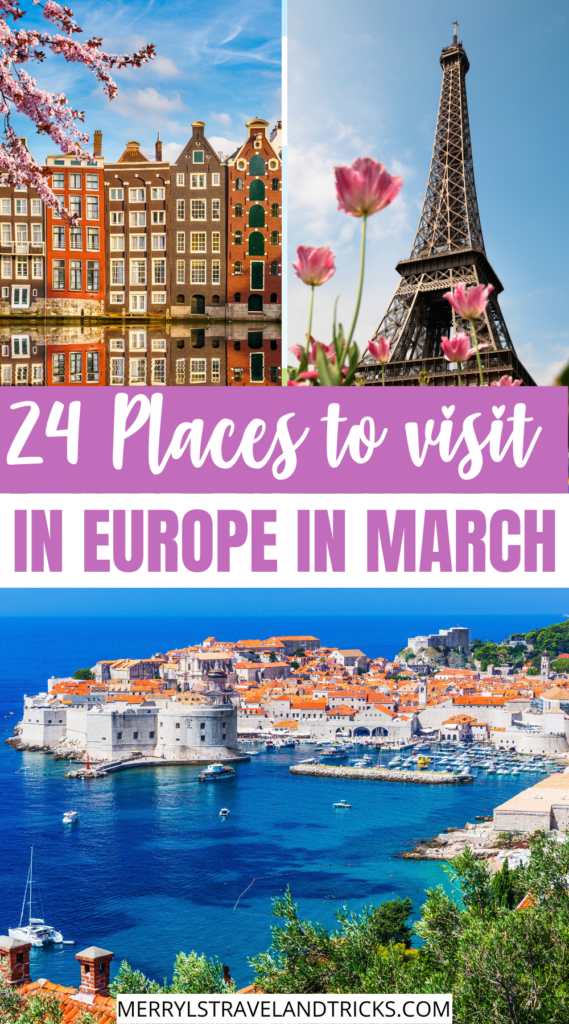24 Best Places to Visit in Europe in March
Spring in Europe is surely an experience that cannot be missed. In March, Europe dons a vibrant tapestry of blossoms, festivals, and cultural delights. It is the perfect time to explore the continent, with the charm of cobblestone streets, the allure of historical landmarks, or the magic of springtime events. So if you're planning to visit Europe in March, here are 24 best places to visit as recommended by travel bloggers!
Lisbon
By Madison from madisonsfootsteps.com
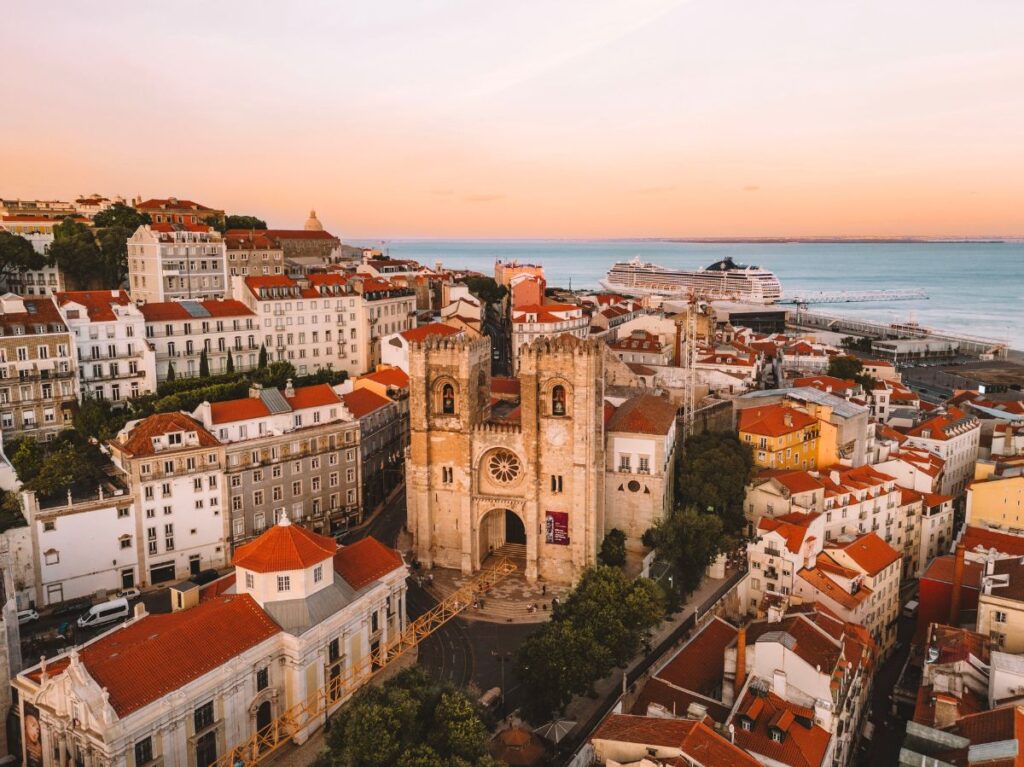
When planning a trip to Europe in March, you’d be remiss not to add a stop in beautiful Lisbon to your itinerary. Situated on the scenic western shores of the Iberian Peninsula, Lisbon offers a rich history, vibrant culture, and stunning views (or miradouros) around every corner.
If you’re after lower prices and fewer crowds, March is the perfect time to visit Lisbon. The weather is very pleasant this time of year, around 65°F during the day, and visitors have the chance to experience the Carnival of the Villains, a pre-Easter celebration in Portugal.
Regardless of the time of year, there are tons of exciting things to do in Lisbon. Listen to Fado music at local bars, wander along the picturesque Pink Street, savor an unbelievable sunset from the Castelo de São Jorge, and learn more about the city’s fascinating history on a free walking tour. Lisbon also has a thriving culinary scene, so be sure to feast on pasteis de nata, grilled octopus, local cheeses, and vinho verde (green wine).
After living in Lisbon’s Alfama neighborhood for two months, I highly recommend having a meal at Lisboa Tu e Eu 2 – their Bacalhau à Brás (salt cod mixed with eggs and potatoes) is to-die-for!
Iceland
By: Victoria of Iceland Trippers

One of the best places to visit in Europe in March is Iceland. After all, there are a ton of unique festivals and events for you to enjoy.
You can start by checking out the Food and Fun Festival. It is held during five days at the beginning of the month and features cuisine from top chefs from around the world. They create multi-course meals using Icelandic ingredients and serve their menus at fabulous local restaurants. The chefs then compete for the title of Food and Fun Chef of the Year.
Alternatively, you could enjoy a brew on March 1st and celebrate Beer Day (Bjórdagurinn).. This event was designed to commemorate the end of Prohibition, which officially concluded in Iceland on March 1st, 1989.
However, if you enjoy natural landscapes then be sure to tour one of Iceland’s famous glacier ice caves. They can only be visited in winter and March is the last month to see them before they are closed for the season. Must-see ice caves include the Vatnajokull Ice Cave, Katla Ice Cave, and the Langjokull Ice Cave.
Afterward, book a northern lights tour to enjoy the elusive Northern Lights. A tour is your best option since these expert’s know where to go to find them. This is particularly important in March since the days are getting longer and clouds/rain/snow can obscure solar activity. Plus, most tours offer you the chance to rebook for free if you don’t see the Northern Lights during your excursion. Just be sure to track the aurora visibility online to increase your chances of seeing the Northern Lights in Iceland in March.
Zermatt
By Natasha of The World Pursuit Media

Nestled in the southern reaches of Switzerland, Zermatt stands as a mountain resort town celebrated for its array of outdoor escapades and plenty of fun things to do. Situated beneath the majestic Matterhorn peak in the Swiss Alps, this quaint village effortlessly earns its status as one of Switzerland's premier destinations, and it's easily one of the best places to visit in March.
The journey to Zermatt is an experience in itself, often beginning with a scenic train ride. As Zermatt is a village without car access, the primary mode of transportation is by train, given its excellent connectivity to the Swiss Rail system. For those with a rental car in Switzerland, it is convenient to drive to Täsch and utilize their overnight parking facility, offering 2,100 covered spaces accessible 24/7. From Täsch, a brief 12-minute train ride to Bahnhofstrasse, Zermatt's main terminal, is available via the Zermatt shuttle, operating every 20 minutes. Swiss Travel Pass holders enjoy complimentary passage, while others can avail themselves for CHF 8.20 each way. Parking in Täsch costs CHF 16.00 per day.
When you reach Zermatt, options like walking, electric buses, or horse carriages facilitate easy travel to accommodations. In March it's still pretty wintery, so pack warm clothes and boots to walk around in! Though it's still wintery, March marks the transition from winter to spring, meaning visitors can relish the last moments of pristine snowfall while enjoying milder temperatures along the way.
The iconic Matterhorn, standing majestically, serves as a breathtaking backdrop for various winter sports enthusiasts. In March, skiing and snowboarding are in full swing, and aficionados can revel in the extensive slopes and world-class facilities, while those seeking a more leisurely experience can embark on mesmerizing winter hikes or take the Gornergrat Railway for panoramic views.
If you are craving some delicious alpine food indulge in fondue or raclette at Chez Vrony, perched on the mountainside, providing both exquisite cuisine and awe-inspiring vistas. For a touch of luxury, the Michelin-starred After Seven presents a refined dining experience.
Ireland for St Patrick's Day (Cork)
By Amber from Amber Everywhere

March in Ireland is best known for one thing: St Patrick’s Day celebrations. Although the biggest St Patrick’s Day events likely take place in Boston, you can have a much more unique experience by celebrating in Ireland.
Each town in Ireland will celebrate St Patrick’s Day a little differently, but the festivities usually include a parade and general celebrations in the local pubs.
Cork, Ireland’s second city, is an exciting and festive place to visit in March. The St. Patrick’s Day Parade is enormous and well-attended, with activities for adults and families. Throughout the day, there are events with live music in the streets and in local venues, including plenty of traditional music.
For the best trad music, visit Sin é, a local pub. You’ll need to get there early, though, because it’s a small space and fills up quickly.
Before or after the holiday, there are plenty of things to do in Cork to keep you busy for several days. From kissing the Blarney Stone nearby in Blarney to shopping your way through the English Market, there’s something for everyone.
After a few days in Cork, you can follow the Wild Atlantic Way to the west and pass through Killarney National Park, drive the Ring of Kerry, and gaze out over the Cliffs of Moher. Finish your trip in Galway City, home to plenty of trad music and a lively Latin Quarter that’s always bustling on the weekend.
Beware that Ireland is still quite chilly in March, so you’ll need to dress in layers and bring a warm, waterproof coat. Waterproof shoes and even rain pants are also a good idea. On the bright side, the chillier March temperatures are accompanied by off-season pricing for rental cars and hotels, so you may be able to find some great deals.
Budapest
By Mal of Renting A Car In Europe 101
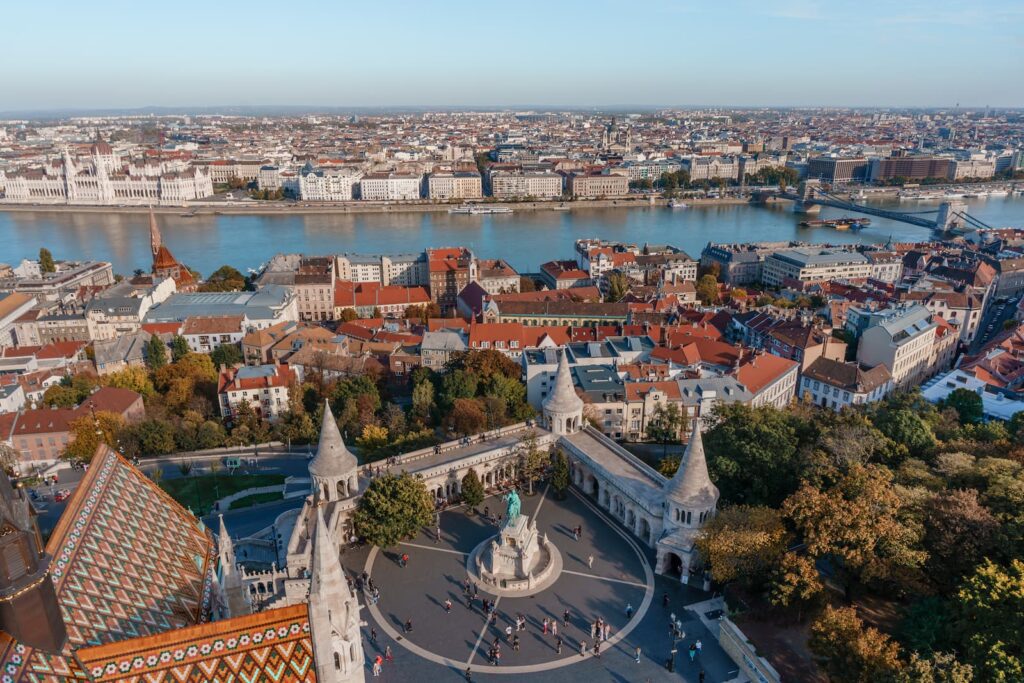
Located in Central Europe, the capital of Hungary - Budapest draws visitors with charming architecture, hearty food and lively nightlife. March is a particularly good month to visit for cheap deals on flights and accommodation, plus all the city’s attractions will not yet be overrun with tourists.
The area of Budapest has a unique geology, and the city practically sits on thermal underground waters. Visiting one of its excellent public thermal baths, such as Széchenyi or Gellért, is a must-do activity, especially in March when average day temperatures are around 12 degrees Celcius.
Also, make sure to visit the Fisherman’s Bastion, located on the western bank of the river Danube, which boasts magnificent views over the city and the Hungarian Parliament. Another good viewpoint is the 96-metre-high bell tower of St Stephen’s Basilica, featuring neo-classical architecture.
In the evening, head to the Jewish quarters, home to “ruin bars” for a bit of nightlife and culture. The most famous ruin bar is Szimpla Kert, where you not only can drink quality Hungarian beer and mingle with the locals but also shop for handicrafts and natural products.
If your trip is longer than 2-3 days, get a rental car in Budapest and venture outside of the city boundaries! There is so much to see nearby. We recommend Gödöllő, located only 33 km away from the capital and home to the second-largest Baroque castle in the world.
Krka National Park (Croatia)
By Ben from Ticket 4 Two Please
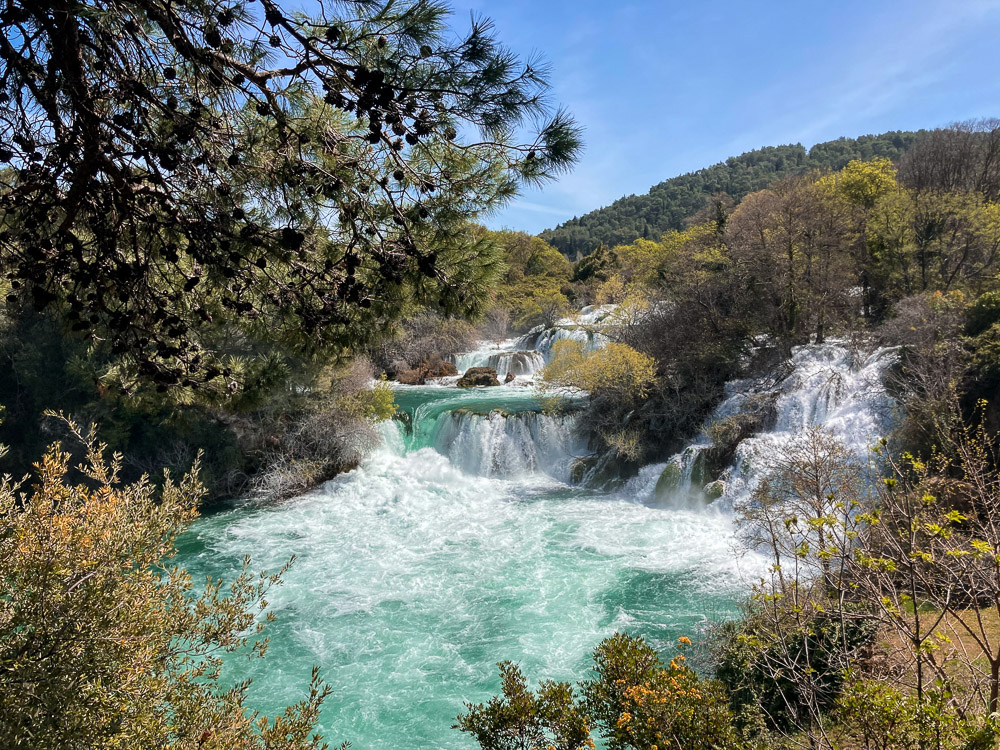
If you’re looking for a fascinating European destination to visit in March, away from the crowds and reasonably easy to get to, then look no further than Krka National Park in Central Croatia.
Krka National Park is one of Croatia’s most popular sites, and with the boundary of the park spanning an impressive 73km along the Krka River, attempting to visit the entire park in just one day can be a daunting prospect.
One of the first things you should know about visiting Krka National Park, is that there are 5 different entrances to the park - Skradin; Lozovac; Roski Slap; Krka Monastery; Burnum - but Lozovac is definitely the most popular.
The main attraction of the park, and the reason why so many visitors flock here each year, is the impressive collection of waterfalls at Skradinski Buk. You even get the chance to walk over the falls via a series of twisting and winding wooden boardwalks - it really is a sight to behold!
If you get the chance, it is recommended to catch a boat ride (for a slight additional cost to the entrance ticket) from Skradinski Buk to Viskovac, a tremendous Franciscan Monastery built on a small island in the middle of a lake.
Krka National Park is an hour's drive North of Split, so hiring a rental car to reach the park is an easy way to visit. Alternatively, there are several daily tours departing from Split and Zadar that allow you to visit the park in comfort.
Krka National Park attracts crowds of up to 1.5 million people annually, but the vast majority of these visit during the peak summer months.
Instead of jostling through the masses and tip-toeing on the edge of the boardwalks, why not visit Krka in March, where the temperature is still fairly ambient and the crowds are virtually non-existent?
Corfu
By Lowri from Many Other Roads
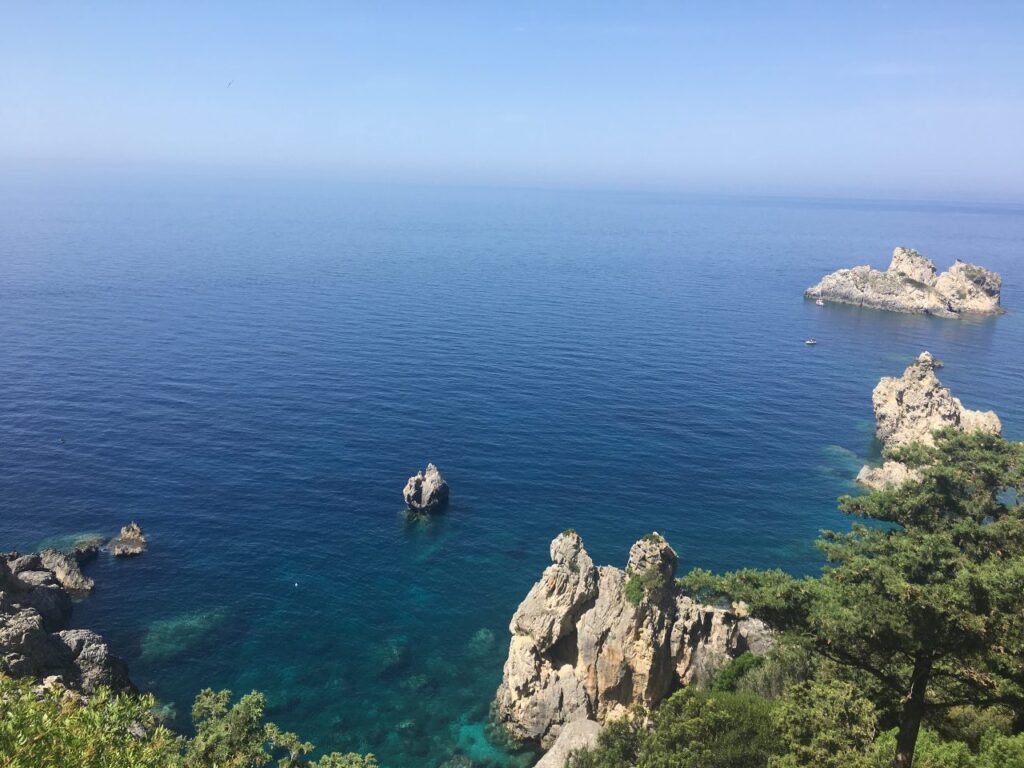
The Greek Island of Corfu is an idyllic escape in March, making it one of the best places to visit in Europe during this season.
Nestled in the Ionian Sea, Corfu offers so much to anyone looking for a taste of Greece. March also marks the beginning of spring with the island blooming with lush greenery and vibrant flowers.
One of the biggest draws of Corfu in March is the lack of crowds!
With temperatures starting to rise but still not too hot, visitors can explore the island's treasures without the hustle and bustle typical of the summer months. The historical sites, charming villages, and stunning beaches can be enjoyed at a leisurely pace, allowing for a more relaxing experience.
Visiting Corfu in March offers more affordable travel too. Flights and accommodations are generally priced lower as it falls outside the peak tourist season. You will also be able to travel around the Island on any budget, especially now that they have Uber!
Despite being a quieter time, you don’t need to compromise on activities. Nature lovers can embark on epic hikes and history enthusiasts can explore the UNESCO-listed Old Town with its Venetian architecture and charming alleyways.
Make sure you make the most of the island's vibrant local culture, especially its food. You will find plenty of traditional tavernas that offer authentic Greek cuisine without the queues!
Barcelona
By Tina from Veganderlust
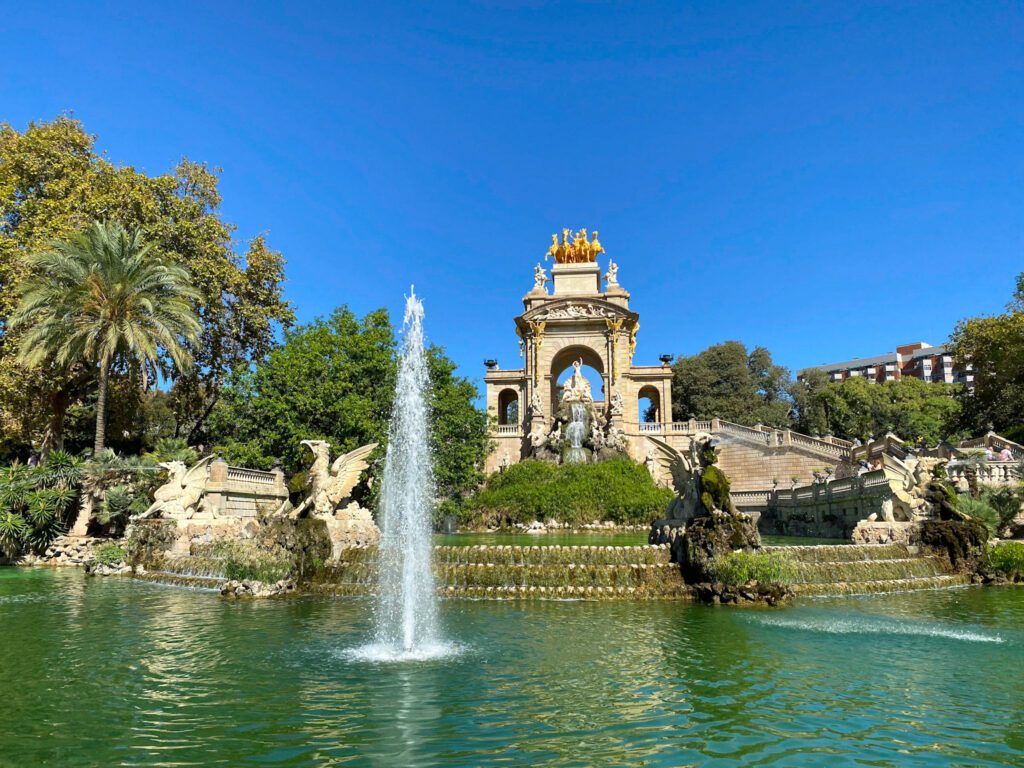
Barcelona is one of the most visited cities in Europe, and perfect for solo travellers, and because of that, the city can become overcrowded in the summer months. The best way to see this stunning city without the crowds is to visit in the shoulder seasons. Visiting Barcelona in March allows you to see the best attractions in sunny weather without being overwhelmed by the number of people in the peak season.
It’s very easy to get to Barcelona since the city has an international airport as well as train and bus connections to every major city in Spain.
Barcelona is known for its unique architecture by Gaudí. His masterpiece is without a doubt the world-renowned Sagrada Familia. This church is built in a modernist style and is expected to be the tallest church in the whole world once it’s completed.
Another popular thing to do in Barcelona is to stroll down the famous street La Rambla and to go for some traditional tapas.
There’s so much more to do in this vibrant city, from relaxing on the beach to taking a day trip to explore the surrounding area. A great way to unwind in the evening after walking all day is to stay in a hotel with a spa area in Barcelona.
To get a sense of the city you need at least three days in Barcelona but the more time you have available the better because you’ll never run out of things to do in this fantastic city.
Sicily
By Becki from Meet Me In Departures
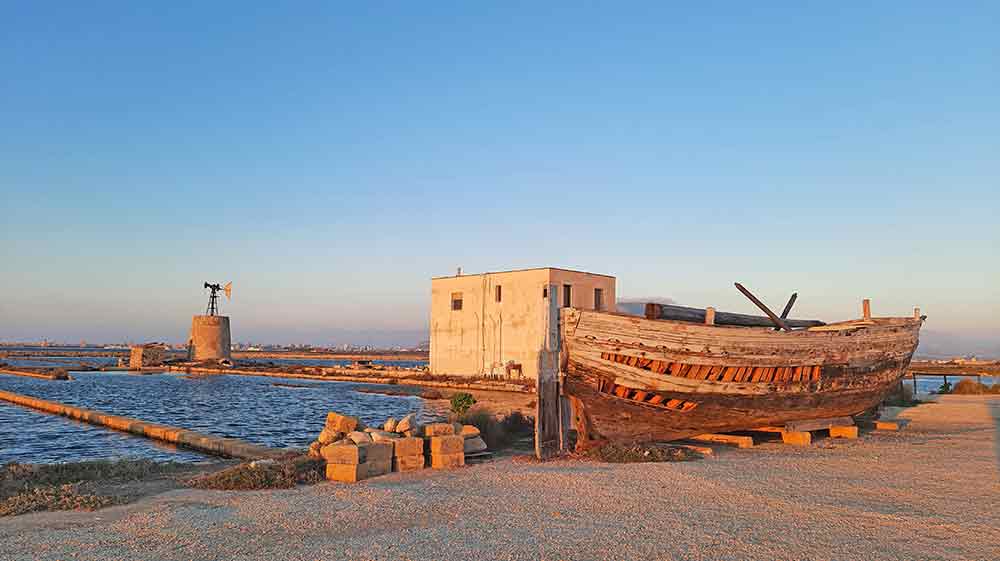
If you're looking for a unique European getaway in March, look no further than Sicily. With mild temperatures, less rainfall, innumerable hidden gems and stunning wildflowers in bloom, Sicily is a dream destination during this time of the year.
Sicily is the largest island in Europe, so it's best to focus on just one region. While most people head to the east to explore the regions of Catania and Mount Etna, the west offers some absolute gems.
Start your west Sicily itinerary in Palermo. the island's capital. Known for its rich history, stunning architecture, and lively markets, Palermo is a food lover's paradise. From fresh seafood to mouth-watering street food, there's something to cater to every palate.
Then escape the bustle and spend a day exploring nature and discovering hidden coves in the Zingaro National Park.
From here, head to the waterfront city of Trapani, and explore the photogenic historic centre known for its impressive Baroque architecture. It's located on the western tip of the island so you can see the Tyrrhenian Sea and Mediterranean Sea at the same time. The city found its wealth through the trade of salt. You can visit the salt pans which are a haven for birdlife - you can even spot wild flamingoes!
Trapani is also the gateway to the captivating Egadi Islands. A short ferry ride will take you to Favignana, where you can explore hidden coves, and crystal-clear waters, and enjoy delicious seafood.
Don't miss Erice, a medieval hilltop town that offers breathtaking panoramic views of the surrounding countryside and sea. Take the cable car up - the station is located just outside Trapani. Whittle away a day. wandering through its charming cobblestone streets, visit the historic castle, and indulge in some traditional pastries.
Getting to the west of Sicily is easy with two main airports serving the region. Choose between Palermo (airport code PMO), or Trapani (airport code TPS). While public transportation is available, the easiest way to explore Sicily is by hiring a car. This gives you the flexibility to visit off-the-beaten-path locations and truly immerse yourself in the local culture.
Seville
By Stephanie from theunknownenthusiast.com
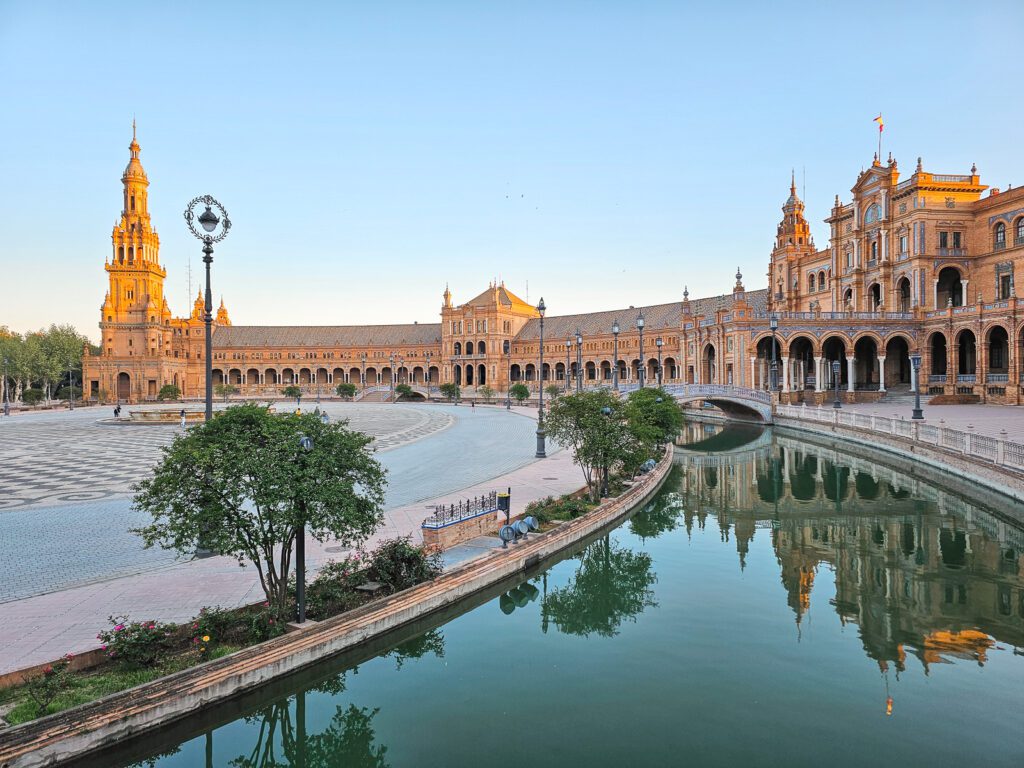
Seville is a fantastic spot to visit in Europe in March. Thanks to it’s ideal southern position on the Iberian Peninsula, Seville can have very pleasant weather in March, even to the point of not needing a jacket. By the end of the month, the city is well into spring, with flowers budding and beautiful, blossoming trees everywhere you look.
In addition, Easter and Holy Week (the entire week leading up to Easter) is incredibly important in Spain, and often these dates fall within the end of March. Seville has massive celebrations to celebrate Holy Week, with multiple, elaborate processionals that include bands, floats, and “penitents” dressed in ceremonial garb winding their way throughout the city at all times of the day and night. Crowds flock to see these processionals, which are such a unique and interesting cultural experience!
Even without this event, Seville is just a great city to visit, even for a day. The architecture is beautiful and you can see a lot of Islamic influence from when southern Spain was controlled by the Islamic Moors. A few spots you can’t miss are the Real Alcazar, a gorgeous palace full of archways, gardens, and intricate tiled mosaics; the Seville Cathedral and La Giralda Bell Tower; and the Plaza de Espana, an expansive square with towers, fountains, a canal and bridges, archways, alcoves, and again, intricate tiled mosaics. Seville is also very close to multiple other beautiful cities and villages in southern Spain. Many people spend one or two days in Seville, then take day trips to other spots like Cordoba, Granada, Malaga, Setenil de la Bodegas, Ronda, or Gibraltar. There’s so much to see and do in this region!
Amsterdam
By Penny Fernandes of GlobeTrove
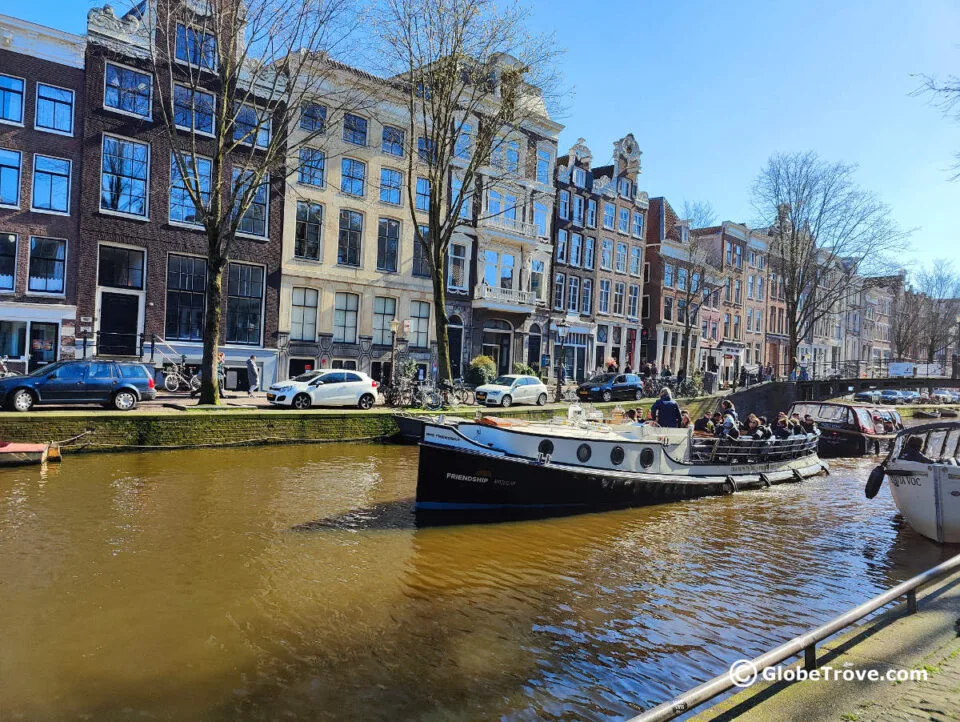
Amsterdam is one of the coolest cities to visit in March. This is the time when the peak tourists have not yet started flocking into the city so you avoid most of the crowds. The museums aren’t quite so crowded and you don’t have to stand in insanely long lines just to get a bite to eat. Weather wise, it could go either way. You could be blessed with lots of sunshine or you could get caught in a downpour.
The reason why I say that Amsterdam is a great place to visit is because spring is just beginning to set in. While the famous Keukenhof gardens open up only during the last week of March, you will see loads of flowers everywhere. Everything is turning green and it is also the perfect time to explore the surrounding countryside. Zaanse Schans, Kinderdijk, Delft, Rotterdam, Den Haag and so many other locations make excellent picks!
If you are visiting in March, I would recommend booking one of the Amsterdam tulip tours in advance. These tours sell out way in advance. You do have to understand that the tulip gardens are not in full bloom in March but the crowds aren’t insane. We visit around the same time just to catch uninterrupted views. It is one of the highly recommended things to do in the city at this time of the year.
Rome
By Kim from travelingswansons.com

Rome in March is a top pick for a trip to Europe. The weather is just right – cool enough to wander comfortably but warm enough to enjoy being outside. It's also less busy, so you can explore famous places like the Colosseum, Trevi Fountain, and Vatican City without the usual crowds. You could also explore the city at night, since the weather is pleasant and the crowds are scanty.
The city looks beautiful in March too. Spring starts to show, bringing colors to life, especially in places like the Villa Borghese Gardens.
And, of course, the food is always amazing. In March, you can sit outside and enjoy Rome's delicious dishes while watching the world go by.
Also when in Rome, you must take a golf cart tour of the city. It's a fun, different way to see the city, zipping through the narrow streets and discovering spots you might not find on foot.
Also, keep in mind that sometimes Easter falls in March. If it does, you'll get to see some special celebrations, especially around the Vatican. It adds a bit more excitement to your visit.
Overall, Rome in March has a lot going for it – good weather, fewer people, many things to do, great food, and the added bonus of possibly catching Easter festivities. It's definitely worth considering for your March travels in Europe.
Madrid
By Samara Kamenecka of Spain Awaits

Madrid is the perfect European city to visit in spring, with March being a particularly interesting month.
For visitors with an interest in bullfighting, the month of March marks the beginning of the season. Visitors interested in this cultural attraction can get their tickets online or at the Las Ventas bullring. Tickets can range in price from 7 euros to 195 euros. The bullfighting season really gets into full swing in May but there are several bullfights scheduled in March.
Don't miss World Theater Day, which is held on the 27th. There's an incredibly diverse lineup with hundreds of performances and activities throughout the city, starting in the evening and ending late at night.
March is also a great month to visit because the weather is warming up, the city's terraces are bustling and full of life, and the locals are enjoying the many activities Madrid has to offer. Cherry blossoms are also starting to bloom, and there’s no better place to see them than at Retiro Park, or head to Quinta de Los Molinos Park to behold an even more stunning sight: more than a thousand almond trees in bloom, usually at the beginning of March.
Athens
By Cristina from LooknWalk Greece
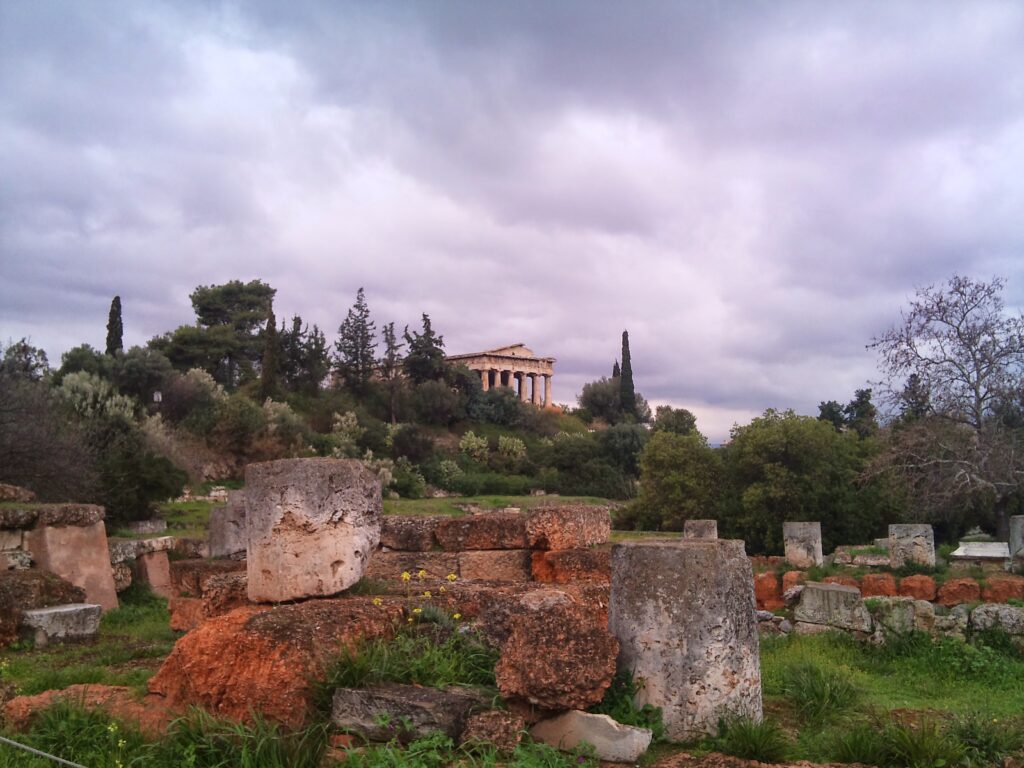
Blessed with a Mediterranean climate, Athens enjoys warm weather even in winter and early spring. March is an excellent time to visit as the city is not packed with visitors, nature comes back to life, and it’s a real pleasure to spend time outdoors.
Served by an airport, train stations, bus stations, and ports, Greece’s capital is easy to get to no matter your preferred mode of transportation. Most visitors will arrive by air, either from other European countries or from overseas.
Plan for a 5-day stay in Athens, making sure to include a day trip. In springtime, visiting the Temple of Poseidon is an excellent choice!
Famous for being the birthplace of democracy, Athens is filled with incredible historical sites to visit. Take your time to explore the Acropolis and its museum. Nearby, you’ll find Ancient Agora, a lovely green area, featuring the remains of ancient temples and other important buildings, and offering an amazing view of the Acropolis.
Spend some time strolling in this area and stop for some delicious Greek food at one of the many taverns lining the small streets in Plaka. Then make your way to Anafiotika, a charming area that looks almost like the Cyclades.
And if you need a respite from the hustle and bustle of the city, the National Gardens can provide a lovely place to relax. If you want to have a lovely panorama of the city towards the sea, walk up Lycabettus Hill (or take the funicular).
Puglia
By Ingrid of Ingrid Zen Moments
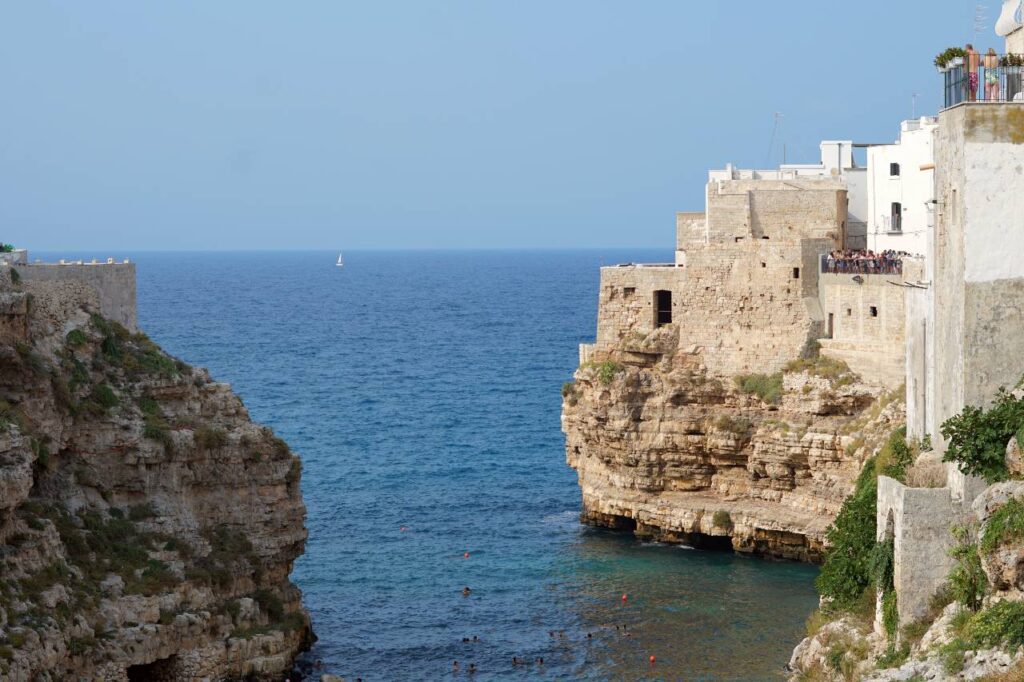
Puglia is one of Italy's hidden gems rapidly gaining popularity with international tourists. Due to its location in the very south of Italy, the weather in March is perfect for an Italian escape. While you might not be able to take advantage of Puglia's pristine beaches and crystal clear waters so early in the year, a stroll on the stone streets of the White City of Ostuni or Monopoli is a must.
No Puglia itinerary would be complete without a visit to Alberobello, the UNESCO World Heritage site renowned for its unique trulli, traditional Apulian dry-stone huts with conical roofs. Even if you don't go there for the beach, pay Polignano a Mare a visit and book a table at the most famous cave restaurant - Grotta Palazzese.
The ancient city of Matera, though technically in the neighboring Basilicata region, is a short drive away and boasts remarkable cave dwellings and a fascinating history. You can easily plan a day trip to Matera and marvel at the city's beauty. History lovers will enjoy a trip to Bari, Lecce, or Brindisi.
The main airport in Puglia is Bari International Airport, and from there you can easily rent a car and drive along the Puglian winding roads.
Marseille
By Elisa from France Bucket List
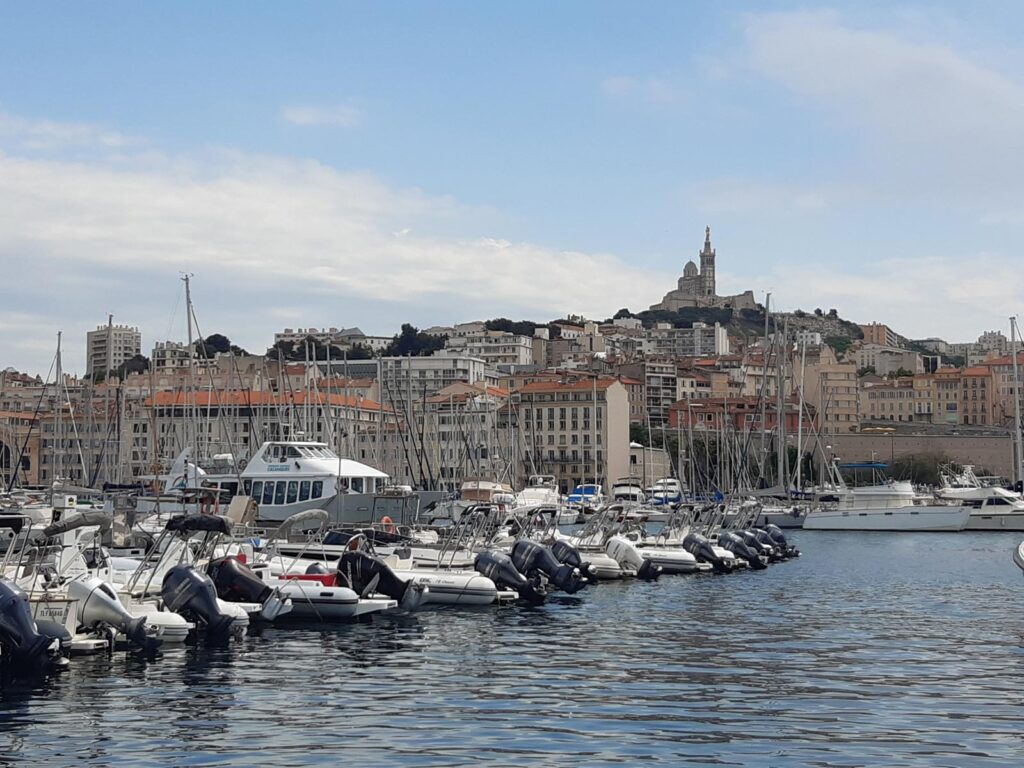
The capital of Provence, Marseille, is a great place to consider for a European getaway in March. One of the sunniest cities in France, Marseille in March can reach temperatures of 16° max, so it’s ideal for sightseeing without the summer crowds, hiking the Calanques (too hot to do it in the summer), or taking a boat tour.
Marseille’s international Airport, Marseille-Provence (MRS), is well connected to many European cities, which means that you can fly directly to Marseille without any layover in Paris. Marseille is also one of the main travel hubs in France, with easy connections with the main French cities and the towns nearby. For example, a train from Paris to Marseille only takes 3.5 hours.
During your stay in Marseille, I recommend taking an e-bike tour. It’s so much fun, and you can cover much more ground than on foot. Some must-sees in Marseille are the Cathedral, the Basilica Notre Dame de la Garde, and the Old Port, Marseille’s beating heart. At sunset, head to the gardens of Palais du Pharo for spectacular sunset pictures of the Old Port.
If you have a spare day in Marseille, used to visit If Island (one of the settings in the novel the Count of Montecristo), or the lovely coastal town of Cassis. Cities like Aix-en-Provence or Avignon are also easy to visit on a day trip from Marseille by fast train.
London
By Fiona of followingfiona.com
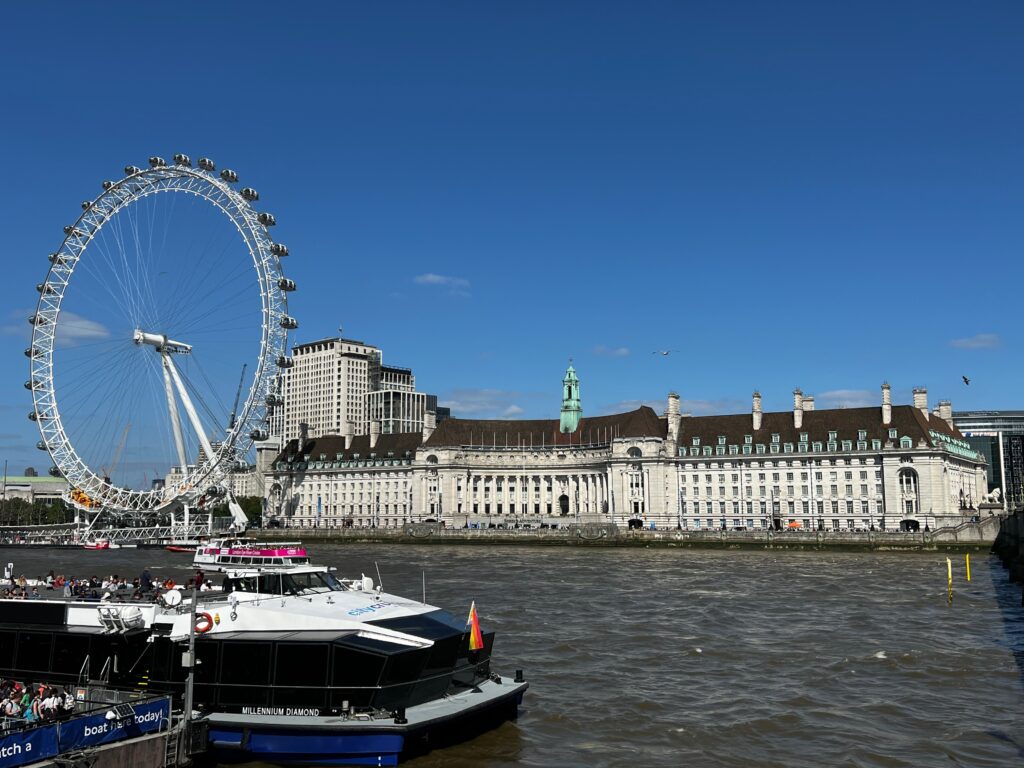
London is a fantastic destination at any time of year, but March is London’s shoulder season which has some clear advantages. In April’s Easter holidays and the summer school holidays, the city’s major attractions can become very crowded. Visiting in March means that icons like the Tower of London and the Natural History Museum won’t be so packed. It’ll be easier to get tickets for West End performances, and you won’t be paying peak summer prices for hotels and flights.
As the city enters spring the days start to get longer and the weather becomes milder – perfect weather for exploring the city on foot. London has many famous landmarks, and the footpath along the South Bank of the River Thames between Westminster and Tower Bridge will take you past several of them. The Houses of Parliament, London Eye and The Shard, to name just a few.
This route gives you the flexibility to choose which landmarks you want to explore in more detail – spend a couple of hours at the Tate Modern, stop for lunch at Borough Market, or head up to The View From The Shard to enjoy the views with a glass of champagne.
Whether you are there for a weekend or two weeks, London always has plenty to offer – free museums, beautiful parks, fantastic shopping and amazing theatres.
Paris
By Soline from On The Road Diary
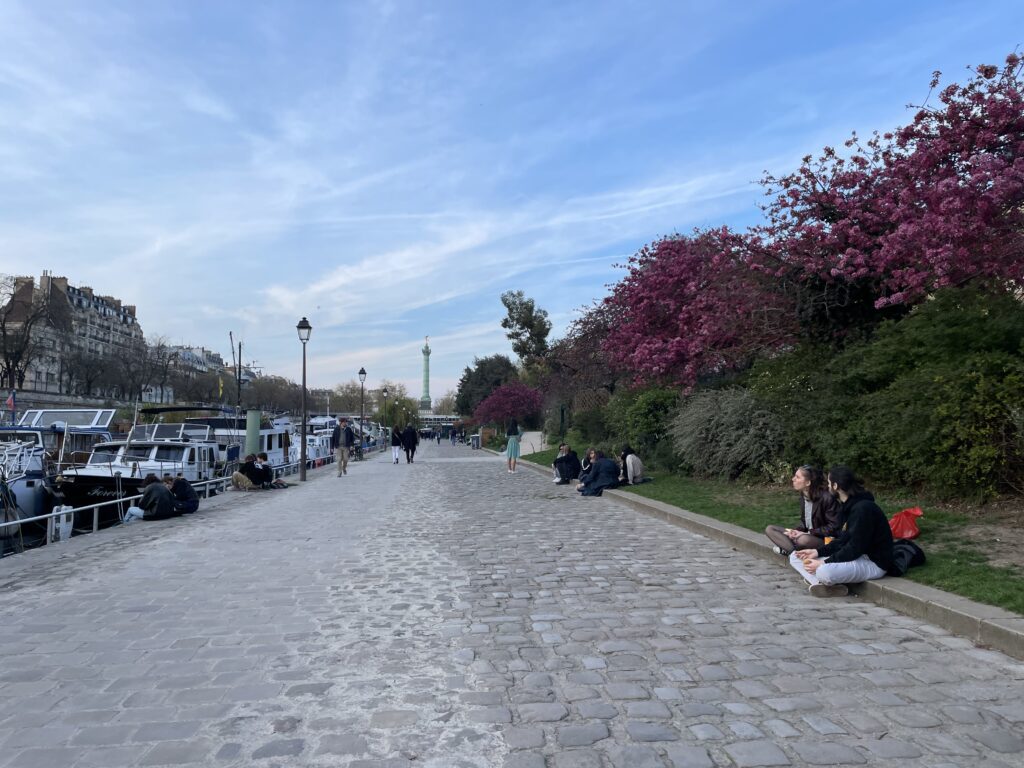
Paris, the capital of France, is world famous for good reasons. Not only is it the city of love, lights and fashion, it also is the most visited city of the world according to Euromonitor International.
Every traveler has to visit it at least once in their life, but to have the best possible experience, we recommend going there in March! This last month of winter, where you can feel spring in the air, is often overlooked by travelers.
We don’t understand why, since the temperatures get nicer, there are fewer crowds, and the city is incredibly alive.
From celebrating St Patrick’s day, an Irish celebration that French people love, to seeing the first blossoms, March is a perfect month to visit Paris. Its terraces come alive again and you can enjoy a coffee at an outdoor table facing the street, the Parisian way!
After visiting landmarks such as the Eiffel Tower and the Sacré-Coeur Basilica, we highly recommend a stroll through the village of Montmartre, Belleville for its street art or the Marais for its cute streets and boutiques. Those three neighborhoods are some of the best places to stay for Paris Olympics, or for a getaway with your partner, friends or family.
Tirana
By Megan Hocking of The Endless Travellers
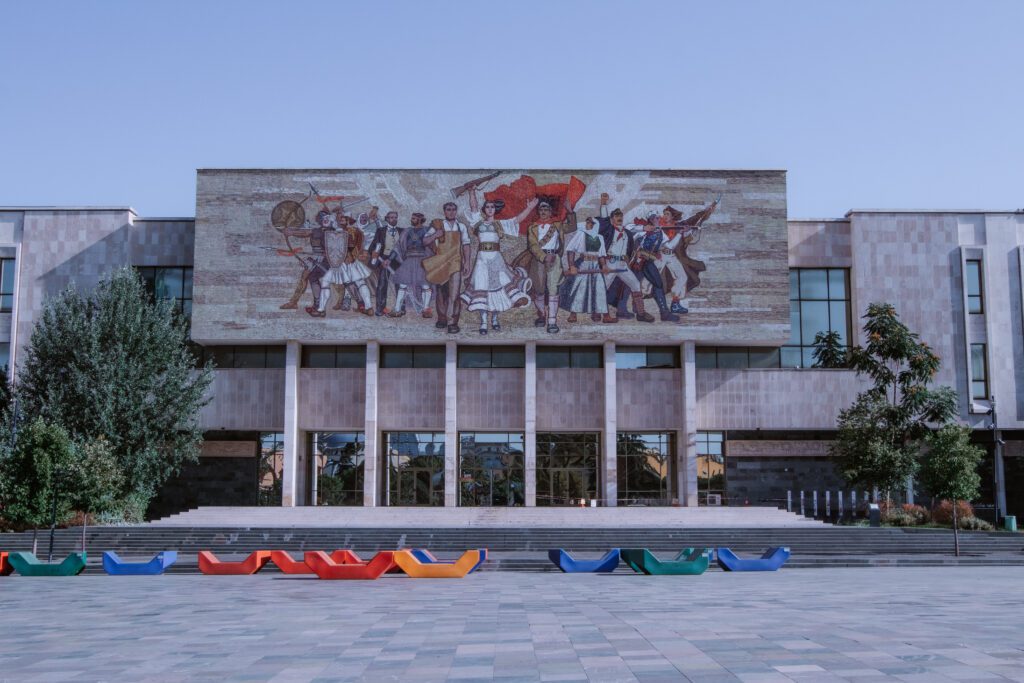
Tirana, the vibrant capital of Albania, draws you in with its unique charm and cultural richness, with March being the ideal time to explore this dynamic city. During this month, Tirana experiences a mild and pleasant climate, with temperatures ranging from 10 to 17 degrees. The cityscape is adorned with blooming flowers, creating a picturesque setting as spring begins to unfold.
One of the main reasons why Tirana is worth visiting in March is for the uniqueness of one of their annual festivals: the Summer Day Festival. Taking place on 14th March every year, the Summer Day Festival marks the end of winter and the arrival of warmer days. As you would expect in Albania, it is a colourful and lively event, with various outdoor activities, performances and traditional Albanian folk dances. The streets are lined with flowers and come alive with locals and tourists alike. The aroma of ballokume, a traditional Albanian sugar cookie, fills the air, whilst locals adorn the “Verore” bracelet, made up of red and white twisted yarn, to symbolise a fresh start in the new year. Bonfires are lit to banish away the darkness of winter.
It’s not just the Summer Day festival which makes Tirana an amazing place to be;there are so many other beautiful destinations near by for you to explore. Beginning your day at Skanderbeg Square, the beating heart of the city, wander the colourful city streets, stopping at quaint cafés along the way. Consider visiting one of Tirana’s fascinating museums to delve deep into the complex past of the country and to understand the way it is today - Bunk’Art 2 and House of Leaves are excellent starting points. Head to the Old Bazaar to explore a vibrant market, surrounded by locals, whilst the Blloku district offers trendy bars and restaurants where you can dance the night away.
Dubrovnik
By by Adri of Traveltipzone
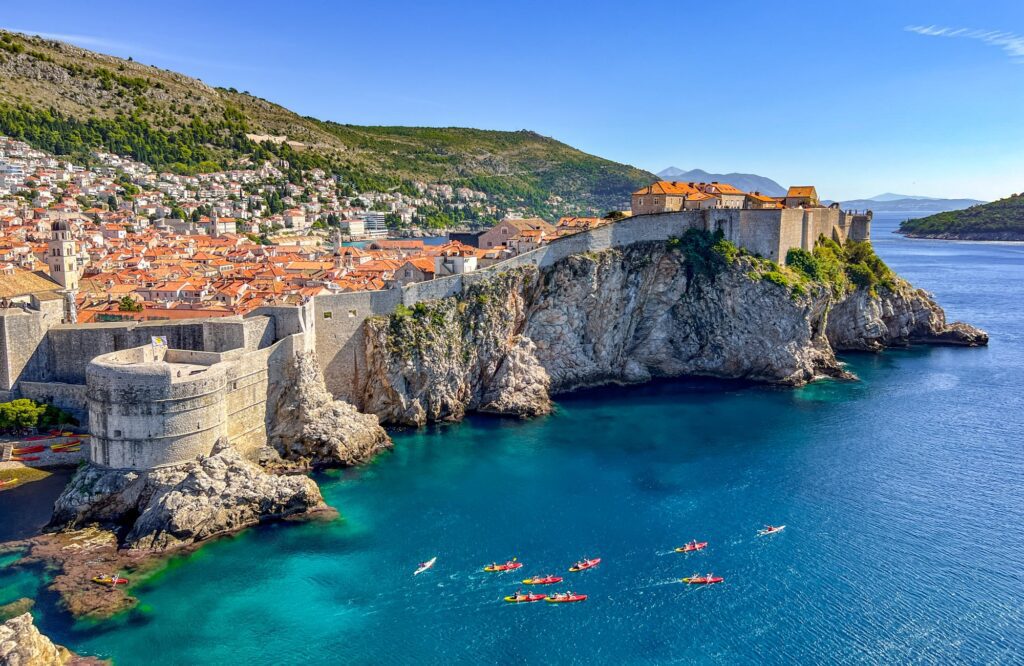
Dubrovnik, situated on the Adriatic coast, is one of Croatia's most popular destinations, boasting relatively good weather even in March, making it an ideal choice for sightseeing and outdoor activities.
Dubrovnik is famous for its medieval architecture, its fascinating history and its crystal clear waters. It is also the location where many scenes from the Game of Thrones series were filmed.
Dubrovnik's Old Town is a UNESCO World Heritage Site and one of Croatia's must-see attractions. Its well-preserved city walls, churches, fortresses and charming streets are an unforgettable experience, especially when the city comes to life in spring.
When in Dubrovnik, stroll along the iconic city walls for panoramic views of the city and the sea. Explore the old town for sights such as the Rector's Palace, Onofrio's Fountains, Sponza Palace, and Jesuit Steps. Don't miss the Lovrijenac Fortress, which offers one of the best views. For a special experience, take the cable car up to Mount Srđ and dine at the Panorama Restaurant for one of the most breathtaking views of Dubrovnik.
March is a great time to visit Dubrovnik, as there are fewer crowds, so you can explore the city in a more relaxed way. You can also visit some of the islands in the region from here. The weather in March is mild, with daytime temperatures around 15°C, which is pleasant for sightseeing. In addition, admission tickets, which are usually quite expensive, become much cheaper in winter and spring, for example tickets for the city walls.
To sum up, Dubrovnik in March can be a magical experience. The historic charm of the city, combined with pleasant weather and fewer crowds, makes it an unmissable destination for those looking for a pleasant European getaway.
White Villages of Andalucia
By Joanna from andaluciainmypocket.com
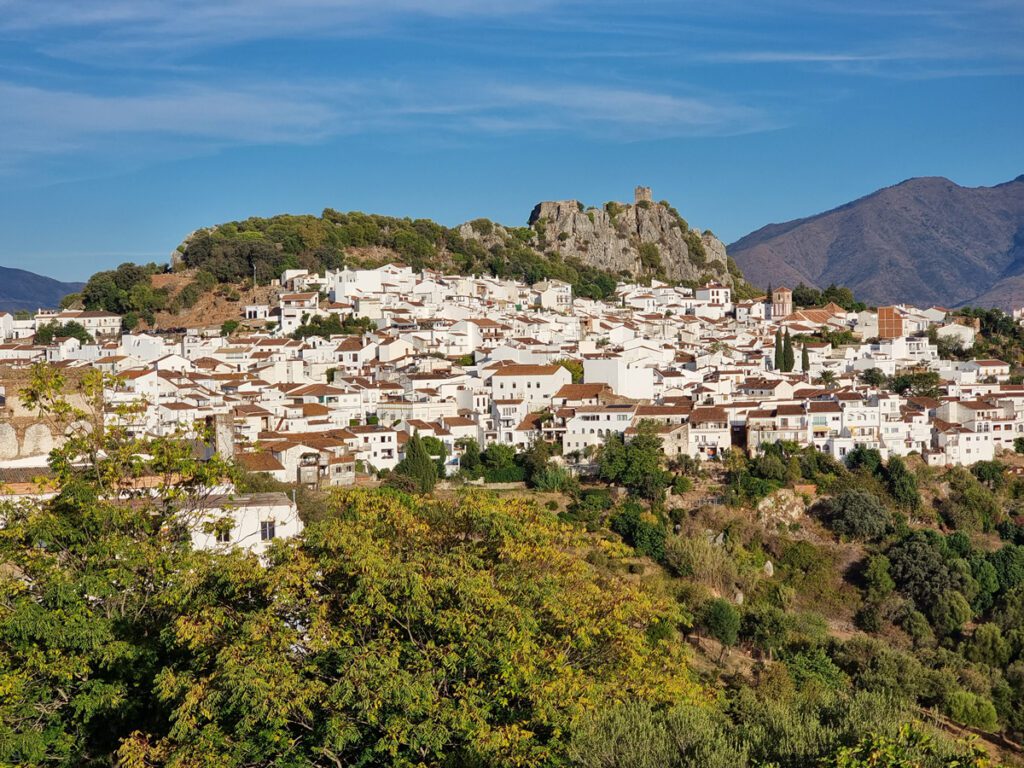
March is a great month to visit the white villages in Andalucia. Scattered around the mountains of Malaga and Cadiz, the white villages are former fortresses in a line of defence used to protect the Al Andalus Empire, back in the Moorish times. Most of the villages are perched on top of hills or peaks, and have gorgeous panoramic views over the scenery below.
The best way to visit the white villages in Andalucia is by car. You can easily hire a car at Malaga Airport, which is the usual gateway to Andalucia. The closest village to Malaga is Mijas Pueblo, which is very charming, on the side of the mountain.
Another great village to visit is Casares, which is close to Marbella. From up here you can see all the way to Gibraltar and across the sea, into Morocco.
If you are travelling to Spain with children, you shouldn’t miss Juzcar, also known as the Smurfs village. Here, all the houses are blue instead of white. This is because the village has been used as a movie set to film the Smurfs. When filming ending, the locals decided to leave their homes painted in blue and place some giant Smurfs in the central parts of the village.
For a unique experience, don’t miss Iznajar, a unique village on top of a hill, surrounded on all sides by a large reservoir.
Prague
By Lewis Ogden of WayToStay.com
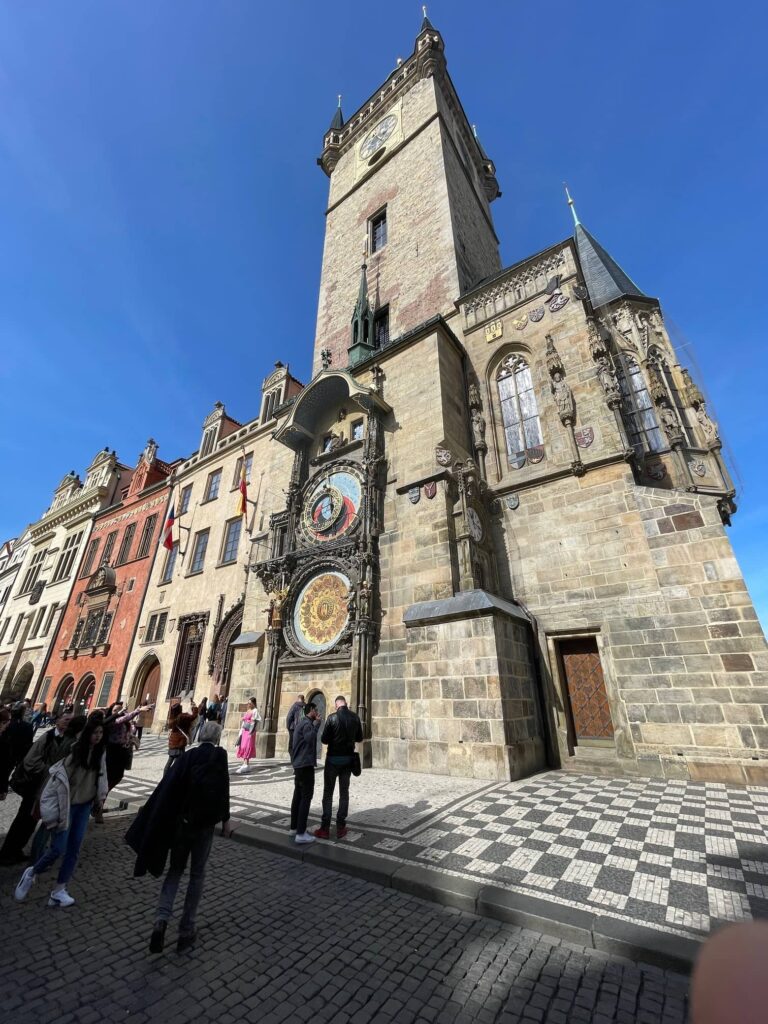
With beautiful medieval architecture, amazing walkable streets, and plenty of cultural festivals, Prague is definitely one of the best places to visit in Europe in March.
While it’s not super warm in Prague in March, the sun is starting to shine more and the bulk of the ice and snow has melted away, making it easy to explore the cobblestone streets and squares by foot. When I visited in 2023 it was 18° Celsius each day!
You can easily wander around the stunning Prague Castle or take in the engineering marvel that is the Prague Astronomical Clock, stopping off for a warming bowl of goulash or a plate of cabbage pancakes along the way.
If you’re looking for something more relaxing, jump on a Vltava River Cruise and take in all the sights and changing seasons from the water. After you’ve seen the main sights, you can check out one of the many festivals that happen across Prague in March.
Coinciding with St. Patrick's Day in mid-March is Prague’s Irish Music Festival. There are music and dance performances all over the city and in different Irish pubs and bars, bringing together talent from across Czechia and Ireland.
If you want to escape the chillier March weather, the beloved Zizkov Night is the event to go to on the last weekend of March. Held in the Zizkov neighborhood, Zizkov Night is a celebration of culture, nightlife, and community. Featuring comedy nights, film festivals, and theater performances, as well as deals and music events in the surrounding beer gardens and bars, this is a great reason to visit Prague in March.
Getting to Prague on low-cost airlines like Ryanair or EasyJet is super easy and affordable in March, as long as you avoid the pricier Easter holiday dates!
Edinburgh
By Alina Kaplanov from TheLuxuryTravelers.com

Edinburgh, a stunning Scottish capital, is known for its unique architecture, spacious parks, and rich history and culture. The medieval
Old Town and the Georgian New Town of Edinburgh are both UNESCO World Heritage Sites, which makes it a must-visit city.
March is a good time to visit Edinburgh. The weather can be a bit chilly as the temperatures are still on the lower side ranging from 2—8°C, but when it comes to rain, it is one of the driest months. If you are lucky enough to be there on March 17th, you can join the celebration of St Patrick's Day which is celebrated in Edinburgh by the large Irish community there. The pubs will be packed with people proudly wearing green and the highlight of the celebration will take place at Cowgate Street, an area that is called ‘Little Ireland’.
One of the main attractions in Edinburgh is the Royal Mile, the main street of Edinburgh which runs through the heart of Edinburgh’s Old Town. Starting from the Palace of Holyroodhouse and leading to the magnificent Edinburgh Castle, dramatically situated on a rock. Another great spot to visit when in Edinburgh is Calton Hill, which has lots of iconic Scottish monuments on top of offering beautiful views of the city.
Spending 3 days in Edinburgh will give you enough time to explore the Old and New Towns of Edinburgh and even hike the famous Arthur’s Seat for panoramic views of Edinburgh.
Malta
By Elizabeth from Tall Adventure Fam
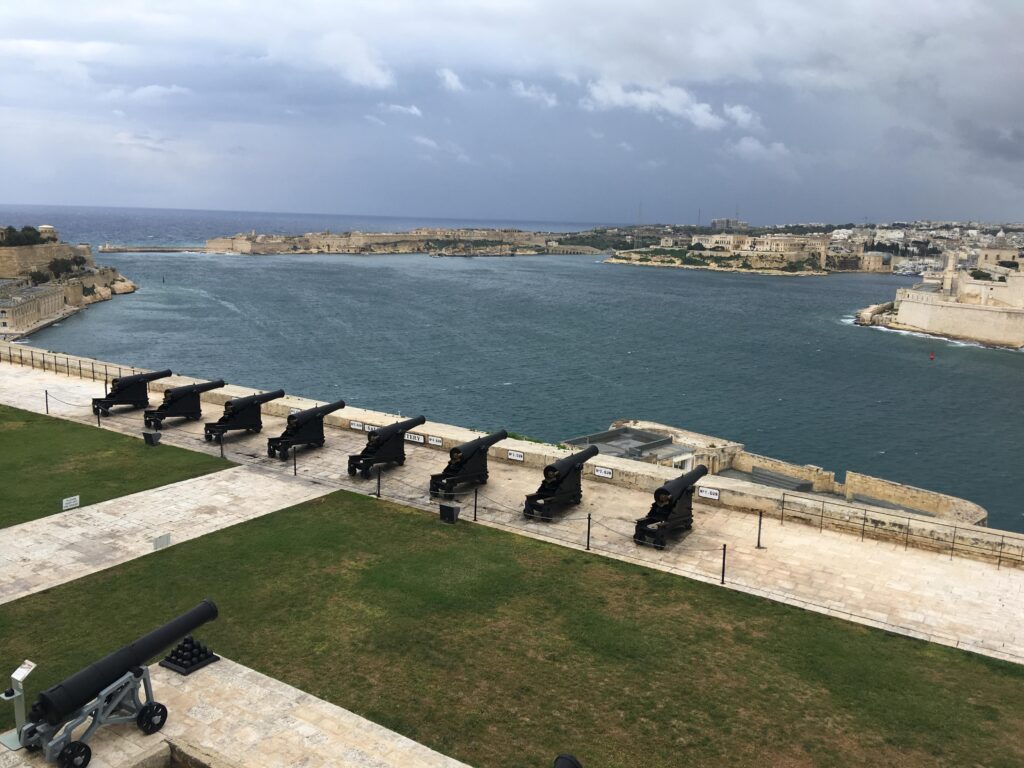
Europe is full of beautiful archipelagos, such as the Westman Islands in Iceland, but Malta is one of the best ones to visit in March. Malta is located in the Mediterranean Sea just off the tip of Italy and is made of a chain of 3 islands. With the average daily temperature being 63 F/ 16.7 C, March is the perfect weather to explore everything the islands have to offer.
March is still shoulder season for Malta, so you have nice weather with the added perk of visiting when there are fewer tourists. If you are in Malta during the week of Easter, make sure not to miss the amazing processions and parades.
Malta is known for its many historical sites, including the Ħal Saflieni Hypogeum which is an easy bus ride away from the capital of Valletta. The Hypogeum is an underground structure that dates back to about 3000 BC and has limited entry, so make sure to book your tickets early.
March is the perfect time to explore the capital of Valletta before it gets too hot. Learn about defending the islands at Upper Barrakka and watch the firing of the cannons at the Saluting Battery. You can enjoy the many shops, walk along the seafront, or sit and enjoy a beverage in the Mediterranean sun.
Malta is also known for its amazingly clear water. In March, the temperature is starting to warm up. It isn’t necessarily warm enough for swimming in the ocean, but it is perfect for relaxing at the beach or putting on a wetsuit and SCUBA diving in the crystal clear water.
Like this post on Europe in March? Save it for later!
